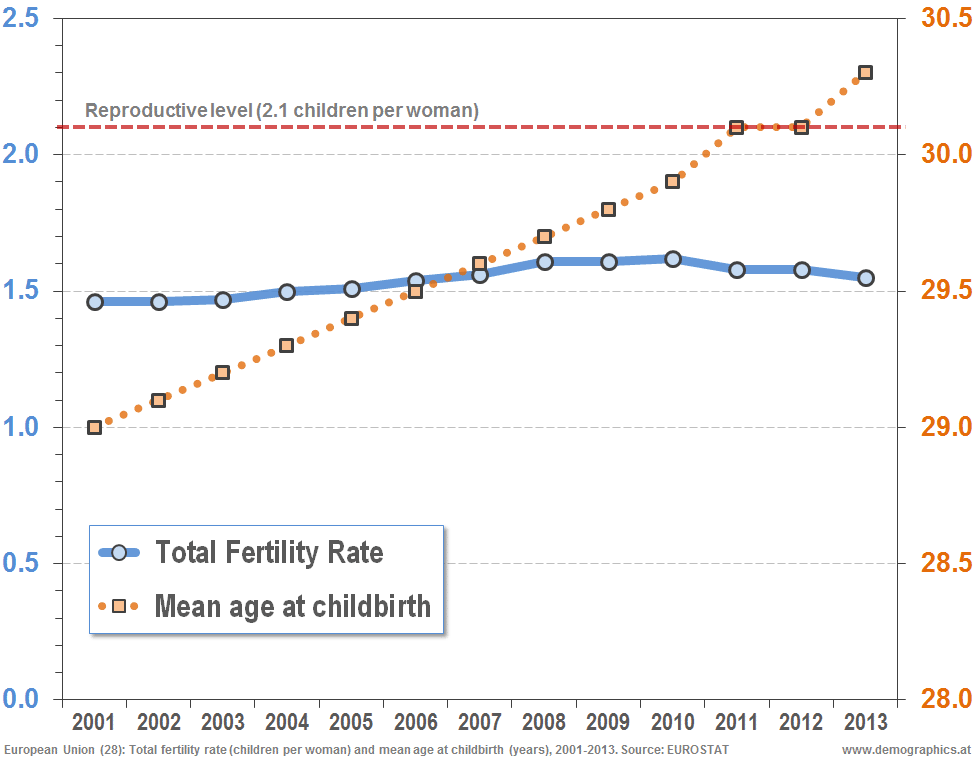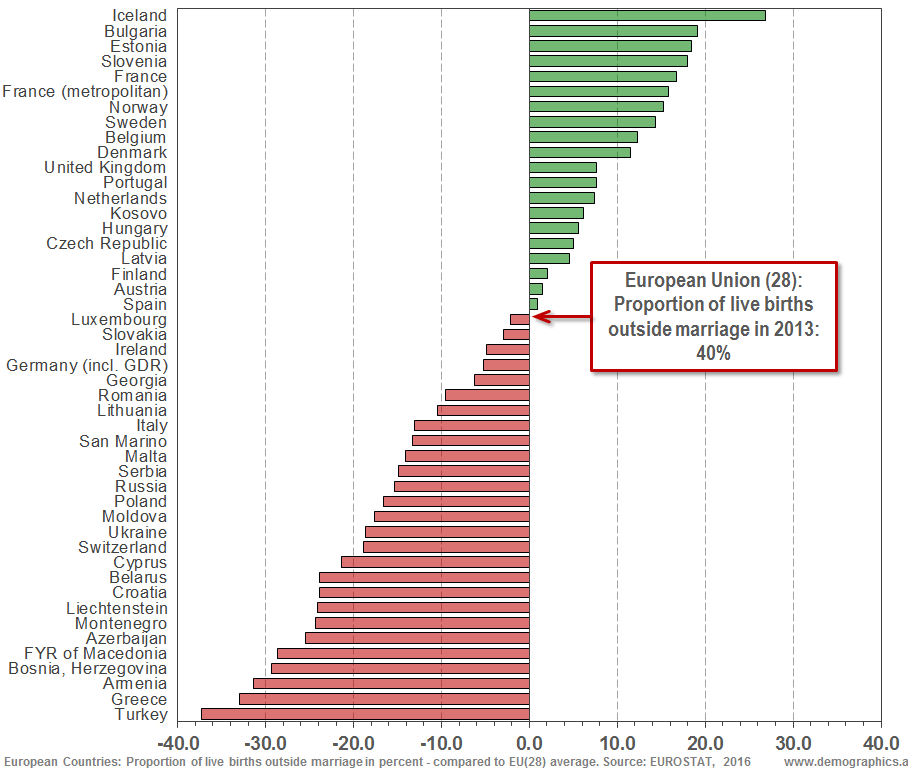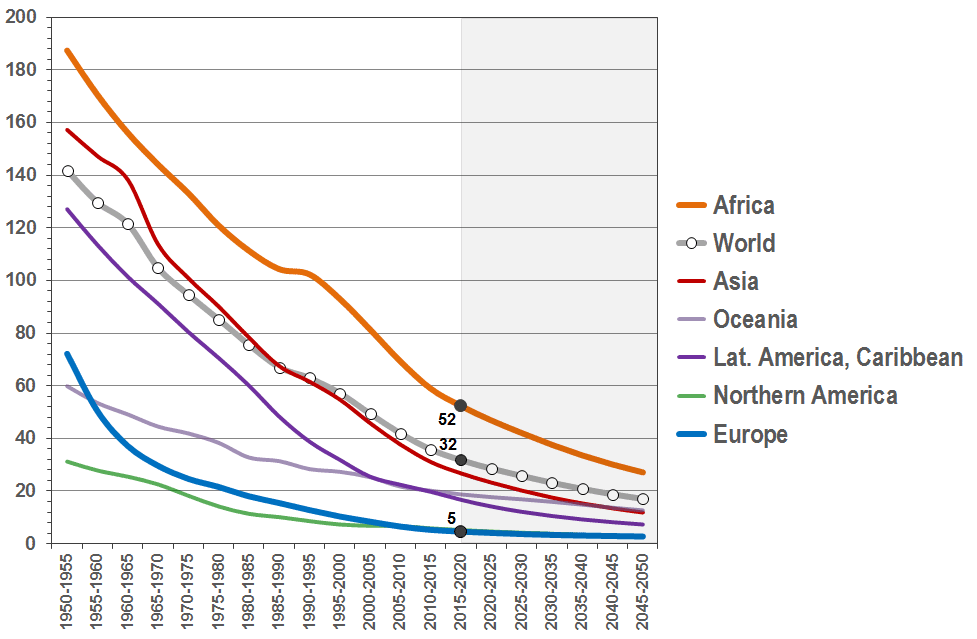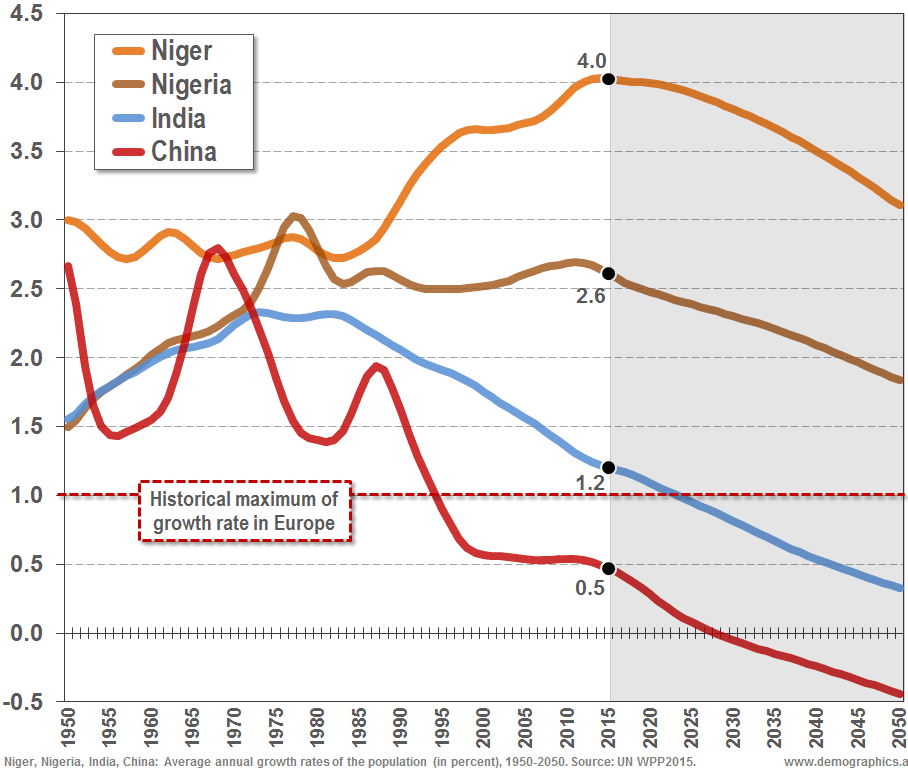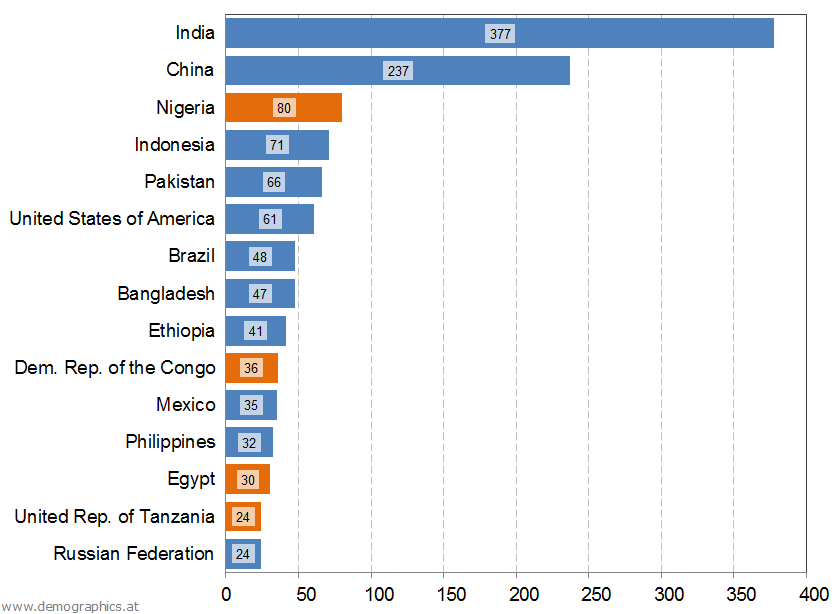
Overview
Updated: 22 December 2016
World: Population, 1950-2100
Five-year population increase, 1950-1955 to 2095-2100
Five-year population increase, 1950-1955 to 2095-2100
Source: United Nations, PPP2015. Population increase in millions; total population (red line) in billions.
Africa: Population, 1950-2100
Five-year population increase, 1950-1955 to 2095-2100
Five-year population increase, 1950-1955 to 2095-2100
Source: United Nations, PPP2015. Population increase in millions; total population (red line) in billions.
Population change: 1950-2100
Democratic Republic of the Congo, United Republic of Tanzania, Belarus
Democratic Republic of the Congo, United Republic of Tanzania, Belarus
Source: United Nations, WPP2015
Population change: 1950-2100
The United States of America, Western Europe and the Russian Federation
The United States of America, Western Europe and the Russian Federation
Source: United Nations, WPP2015
Population density by major regions, 2014, 2050, 2100
Chart prepared by Gerhard K. Heilig, 2014; Data source: United Nations, WPP2012: Medium Variant.
Population density by sub-regions
Chart prepared by Gerhard K. Heilig, 2014; Data source: United Nations, WPP2012: Medium Variant.
Population density: Top-50 most densely populated countries in 2015
Chart prepared by Gerhard K. Heilig, 2016; Data source: United Nations, WPP2015: Medium Variant.
Population density: Top-50 most densely populated countries in 2050
Chart prepared by Gerhard K. Heilig, 2016; Data source: United Nations, WPP2015: Medium Variant.
Africa vs. Europe:
Population aged 0-24, 25-49, 50+ (percent)
Population aged 0-24, 25-49, 50+ (percent)
Chart by GKH. Data source: United Nations, WPP2015
Africa vs. Europe:
Population aged 0-24 (millions)
Population aged 0-24 (millions)
Chart by GKH. Data source: United Nations, WPP2015
Latin America & Caribbean: Population aged 0-4 and 65+ (millions)
Chart by GKH. Data source: United Nations, WPP2015
Northern America: Population aged 0-4 and 65+ (millions)
Chart by GKH. Data source: United Nations, WPP2015
Analysis: Population aging and fertility decline
Correlation between a decline in total fertility and an increase in median age of the population for all countries of the world
Chart by GKH. Data source: United Nations, WPP2015
Correlation between a decline in total fertility and an increase in old-age dependency ratios for all countries of the world
Chart by GKH. Data source: United Nations, WPP2015
Europe: Urbanization and expansion of natural land cover, 1900 and 2010
HILDA v2.0 gross land changes
Urban Problems
Bad, inhumane architecture
By 'Matthew G. Bisanz, CC BY-SA 3.0, https://commons.wikimedia.org/w/index.php?curid=7789381
Bad urban planning
Photo Pruitt–Igoe housing scheme in St Louis, Missouri - United States Geological Survey, from their website. Licensed under Public Domain via Wikimedia Commons - https://commons.wikimedia.org/wiki/File:Pruitt-igoeUSGS02.jpg#/media/File:Pruitt-igoeUSGS02.jpg
Insufficient public transport
Photo: Rush hour at Shinjuku 02 by Chris 73 - Chris 73. Licensed under CC BY-SA 3.0 via Wikimedia Commons.
Noise pollution
Plane landing San Diego Linburg Field airport. Photo: Harry and Rowena Kennedy Taken on October 3, 2014 - via Wikimedia Commons.
Vandalism - Other
Vandalism at Hebden Bridge station, Calderdale, Great Britain. Copyright Phil Champion and licensed for reuse under this Creative Commons Licence.
Looting & crime
Sunday 7 August 2011. Riot damage Inside The Two Brewers in Scotland Green, just off High Road Tottenham. Photo by Alan Stanton, Creative Commons.
Slums and informal settlements
By Jon Hurd - originally posted to Flickr as Dharavi Slum, CC BY 2.0, https://commons.wikimedia.org/w/index.php?curid=4153374
CC0, https://commons.wikimedia.org/w/index.php?curid=30442496
By Jonathan McIntosh - Own work, CC BY 2.0, https://commons.wikimedia.org/w/index.php?curid=70041
Total fertility: Africa, Asia, Latin America / Caribbean
Chart by GKH. Data source: United Nations, WPP2015
Total fertility:
Countries with TFR > 2.5, 2010-2015
Countries with TFR > 2.5, 2010-2015
Chart by GKH. Data source: United Nations, WPP2015
Total fertility:
Countries with TFR < 2.1, 2010-2015
Countries with TFR < 2.1, 2010-2015
Chart by GKH. Data source: United Nations, WPP2015
World population by level of total fertility, 1950 to 2100
Chart by GKH. Data source: United Nations, WPP2010
European Union: Estimates of total fertility, 1960-2013
Chart by GKH. Data source: United Nations, WPP2015
European Union: Total fertility and mean age at childbirth, 2001-2013
Chart by GKH. Data source: EUROSTAT
European countries: Total fertility (children per woman), 2013
Chart by GKH. Data source: EUROSTAT, 2016
European countries: Mean age of women at birth of first child. Difference to EU(28) average, 2013
Chart by GKH. Data source: EUROSTAT, 2016
Countries in Europe and Western Asia
Proportion of live births out of marriage, 2013
Chart by GKH. Data source: EUROSTAT, 2016
Proportion of live births out of marriage - as compared to EU(28) average, 2013
Chart by GKH. Data source: EUROSTAT, 2016
Net Reproduction Rate (NRR)
Infant and child mortality
Figure 1: Infant mortality by region, 1950/55 - 2010/15
Chart by GKH. Note: The infant mortality is the probability of dying between birth and exact age 1. It is expressed as deaths per 1,000 live births. Data source: United Nations, WPP2015
Figure 2: Under-five mortality by region, 1950/55 - 2010/15
Chart by GKH. Note: The under-five mortality is the probability of dying between birth and exact age 5. It is expressed as deaths per 1,000 births. Data source: United Nations, WPP2015
Life expectancy at birth
Figure 1: Life expectancy at birth by major regions, 1950-2050
Chart by GKH. Note: Scale starts at age 40. Data source: United Nations, WPP2015
Figure 2: Life expectancy at birth by country: Highest & lowest in 2010-2015
Chart by GKH. Data source: United Nations, WPP2015
Figure 3: Changes in life expectancy at birth: Highest & lowest change, 1950/55 - 2010/15
Chart by GKH. Data source: United Nations, WPP2015
Adult mortality
Figure 1: Life expectancy at age 65 by major regions, 1950-2050
Chart by GKH. Note: Y-Axis starts at 7.5 years. Data source: United Nations, WPP2015
Figure 2: Life expectancy at age 65 by major regions, 1950-2050
Chart by GKH. Data source: United Nations, WPP2015
Figure 3: Selected countries: Life expectancy at age 65, 1950-2050
Chart by GKH. Data source: United Nations, WPP2015
Migrant stock by major regions, 1990-2015
Data source: United Nations, Department of Economic and Social Affairs (2015). Trends in International Migrant Stock: The 2015 revision (United Nations database, POP/DB/MIG/Stock/Rev.2015).
Migrant stock in percent of the population by major regions, 1990-2015
Data source: United Nations, Department of Economic and Social Affairs (2015). Trends in International Migrant Stock: The 2015 revision (United Nations database, POP/DB/MIG/Stock/Rev.2015).
Q2 What are consequences of rapid population growth?
Figure 1: Niger, Nigeria, India, China: Average annual rate of population growth (in percent), 1950-2050
Chart by GKH. Data: UN WPP2015.
Q4 What are consequences of sub-replacement fertility?
Figure 1: Europe and Northern America: Total fertility (children per woman), 1950-2050
Chart by GKH. Data Source: UN WPP2015.
Note: Scale starts at 1 child per woman.
Note: Scale starts at 1 child per woman.
Figure 2: Major regions: Net-Reproduction-Rate, 1950-2050
Chart by GKH. Data Source: UN WPP2015.
Note: Scale starts at a NRR of 0.6.
Note: Scale starts at a NRR of 0.6.
Figure 3: Europe: Selected low-fertility countries, 1950-2050.
Chart by GKH. Data Source: UN WPP2015.
Note: Scale starts at 0.5 children per woman.
Note: Scale starts at 0.5 children per woman.
Figure 4: Asia: Selected low-fertility countries, 1950-2050
Chart by GKH. Data Source: UN WPP2015.
Note: Scale starts at 0.5 children per woman.
Note: Scale starts at 0.5 children per woman.
Figure 5: Countries with lowest Net Reproduction Rate in 2010/15, 1950/55 and 2010/15
Chart by GKH. Data Source: UN WPP2015.
Q5
Which country has the largest number of children (aged 0-14)?
Chart by GKH. Data Source: UN WPP2015.
Figure 2: Percentage of children: Top and bottom 15
countries, 2015
Chart by GKH. Data Source: UN WPP2015.
Q6
Which country has the largest number of elderly (aged 65+)?
Chart by GKH. Data Source: UN WPP2015.













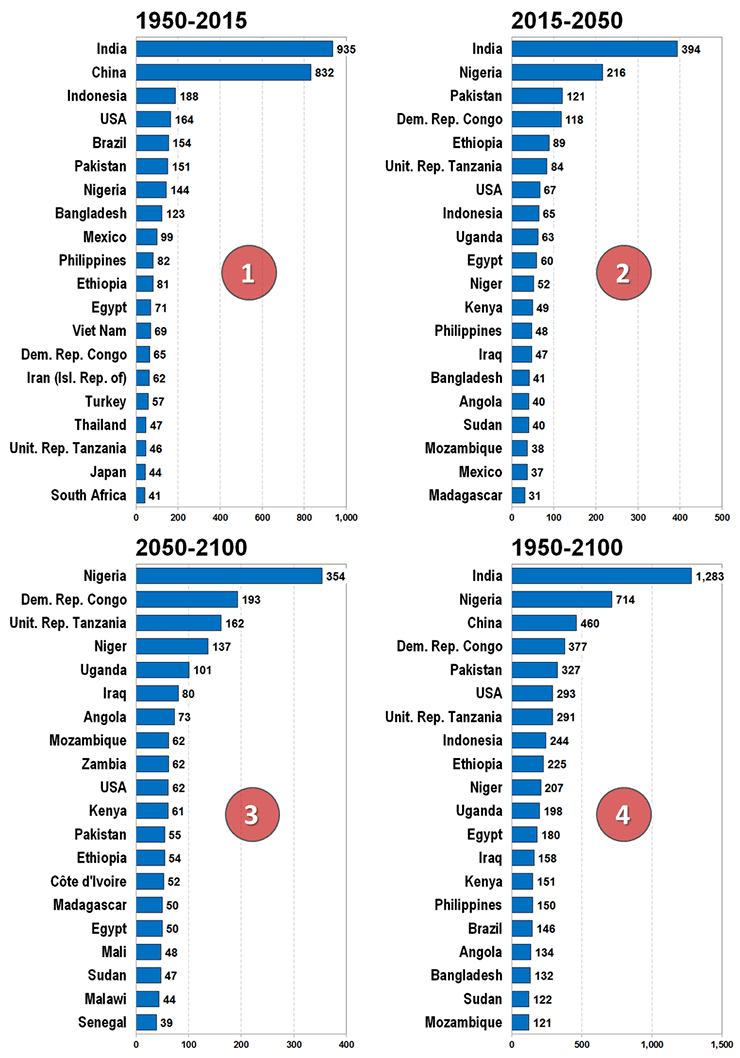
















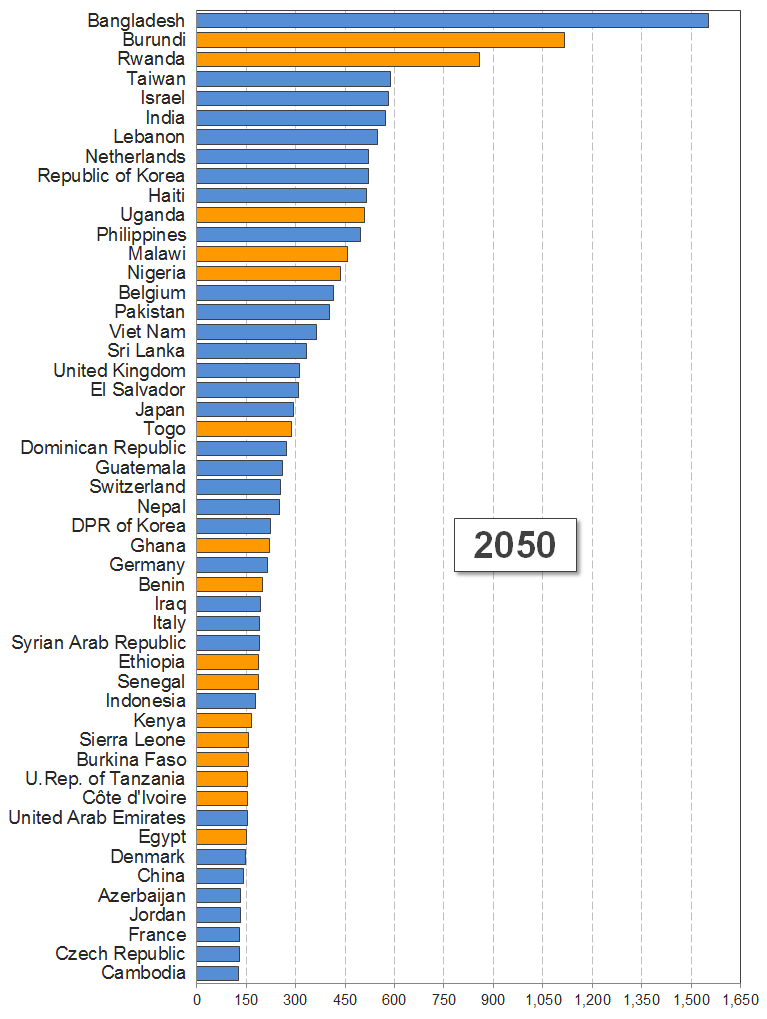












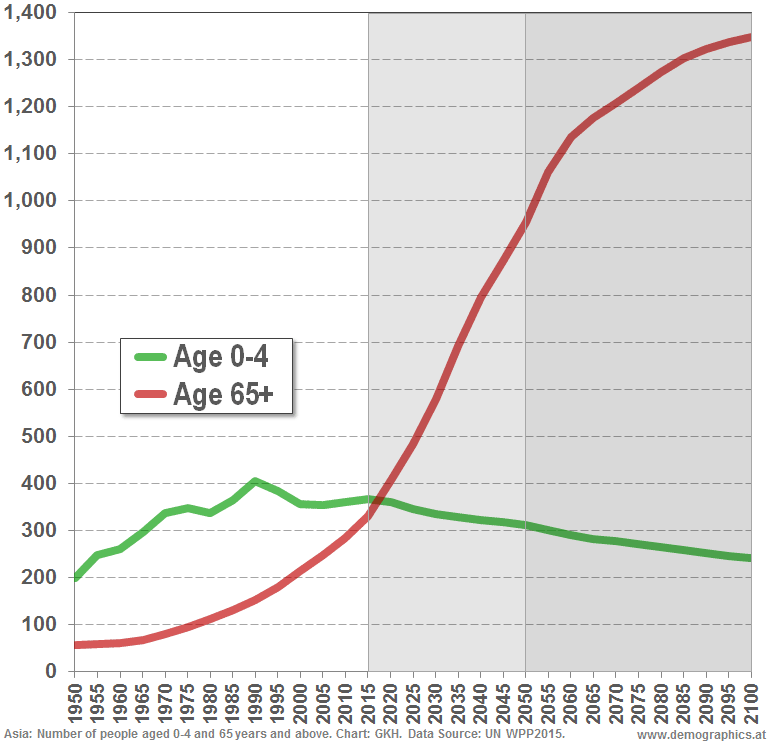

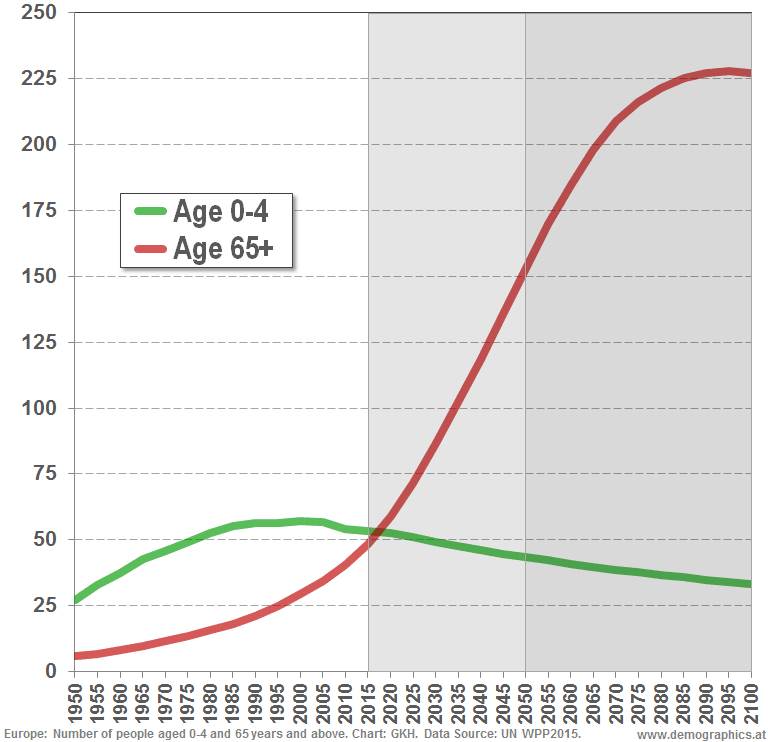





























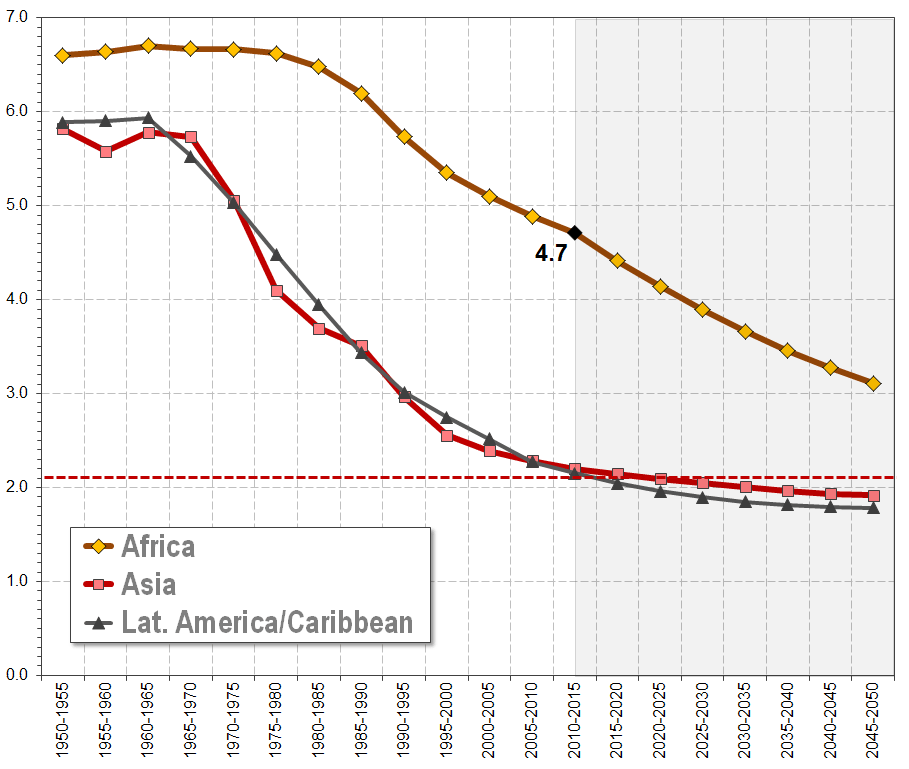



_YB15.png)
